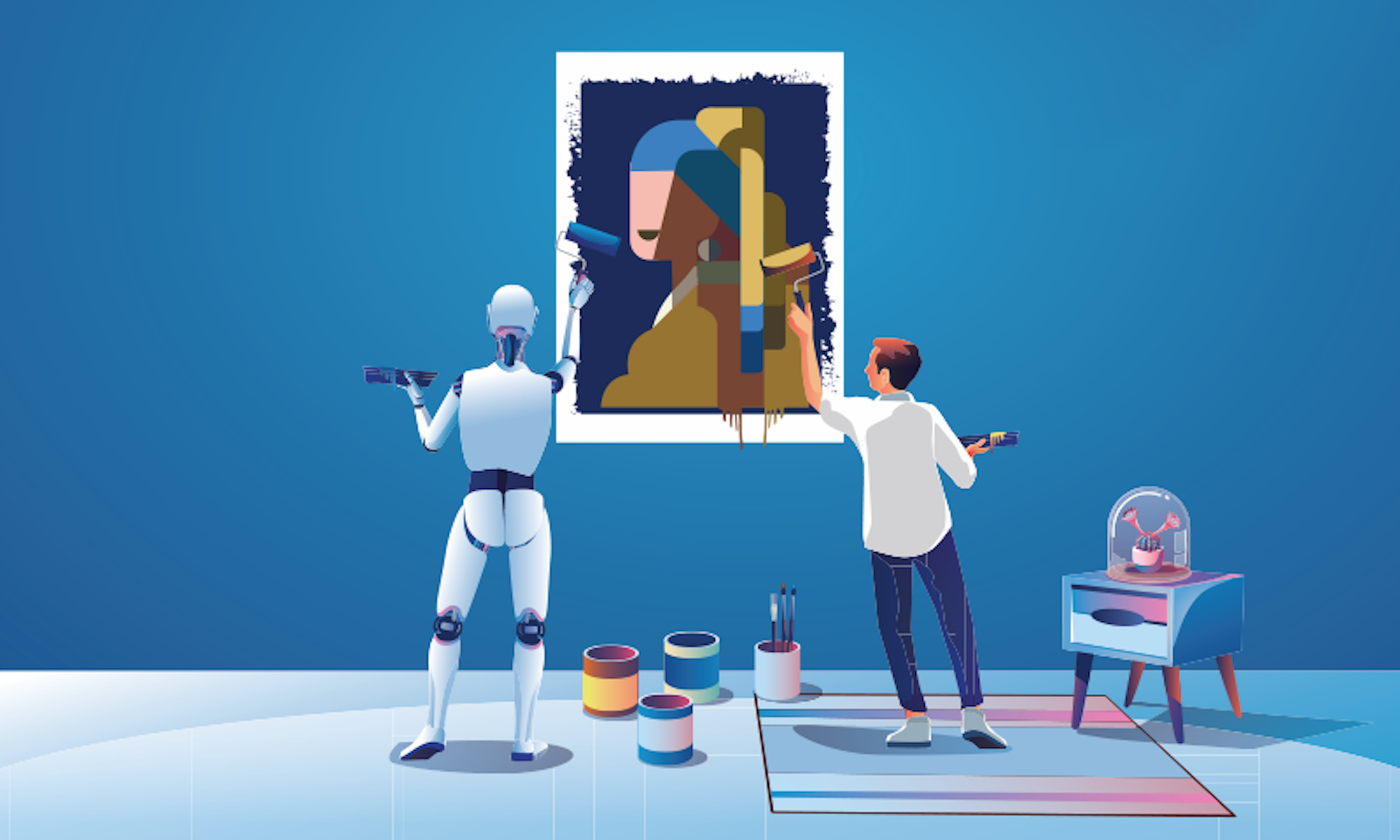In 2022, a work of art generated by artificial intelligence won an art prize. Jason M. Allen of Colorado created the composition with MidJourney, an AI program that turns text prompts into digital paintings. Allen says his vision for the piece, which looks like an oil painting and pictures women standing in an ornate hall wearing Victorian dresses and space helmets, came to him while he was in a state of creative twilight—half dreaming, half awake. He reported trying 624 different prompts before he got the effect he wanted. The work took a blue ribbon in the category of digital art at the Colorado State Fair, but when word of his methods got out, Twitter (now X) exploded in outrage.
The creation and appreciation of art have long been considered uniquely human domains, separating us from the animals and uniting us with the gods. This view is complicated by the recent arrival of AI applications like Dall-E, MidJourney, and others that can create beautiful digital works, and even elaborate imitations of a particular artist’s style. But is it “art” if the creator is not human, and how do we evaluate human-AI collaborations?
We might be a little bit biased. According to a November 2023 article in Nature, people consistently assign less value to art labeled AI-made versus human-made—even when the work of art itself is held constant (labeling the same piece as human- or AI-made). In a series of six experiments with nearly 3,000 study subjects, researchers randomly assigned labels to 28 images describing the creator as AI or human and asked them to rate the images across a number of metrics: monetary value, skill, emotional intensity, complexity, color.
The authenticity of a human having made something can have so much meaning.
The study participants still rated works labeled AI-made as less valuable than works labeled human-made when they acknowledged that they often couldn’t distinguish between the two, and even when they believed the art labeled AI-made was produced collaboratively with a human. On the other hand, evaluations of complexity and emotional intensity in the works of art were less influenced by how the piece was labeled—and evaluations of value were less pronounced when participants were not asked to directly compare human and AI-made efforts.
The authors of the study first became interested in how we value AI-driven art when a fellow Columbia researcher began holding exhibitions of machine-made works in 2016. “People would receive it differently if he gave more credit to the machine for the work,” says first author Blaine Horton, a former performing artist and current doctoral student at Columbia Business School. “They’d say it was cool, but not terribly interesting or creative. But when he took more of the credit for the work, it appeared people responded more positively.”
How we feel about AI art may have something to do with our perception of “authenticity.” In his 1974 book Anarchy, State, and Utopia, Robert Nozick posed the concept of the experience machine. The experience machine is a hypothetical device that could replicate a perfectly optimal life based on the unique definition of whomever was attached. That person would not remember entering the device and would believe their experience was entirely real. On the surface, this seems ideal, but most people reject the proposal.
A 2018 paper, “Nozick’s Experience Machine: An Empirical Study,” quantified this finding. Researchers asked participants whether they would opt into various forms of Nozick’s experience machine and found that a majority, about 70 percent, would not. The authors attributed this attitude to what they call the “authenticity intuition”—or the idea that people value living their lives in contact with whatever they consider reality, independent of how pleasant that reality is.
Blaine notes that this is consistent with existing evidence that the origins or nature of an object can lend it worth, independent of its actual qualities. “There’s ample evidence to show that we as humans like things not necessarily because they are objectively better or worse but because of these essential stories around them,” he says. Perhaps we believe the work of humans is more authentic, and therefore more valuable, than the work of machines. “The authenticity of a human having made something can have so much meaning,” says Blaine.
The good news for human artists: Study subjects found images labeled human-made more creative when these were compared to images labeled AI-made. For Blaine, this suggests that human artists might actually benefit from having their work compared directly to pieces created by AI. Fears that cheaply-made AI art will flood the market and bring down the overall value of human work may be overblown, he says. “There’s this overwhelming doom and gloom perspective of AI being here to destroy human value,” says Blaine. “But if we’re careful about how we implement this technology, we can use it to make the lives of humans and human artists better.” ![]()
Lead image: KrerkStock / Shutterstock




























